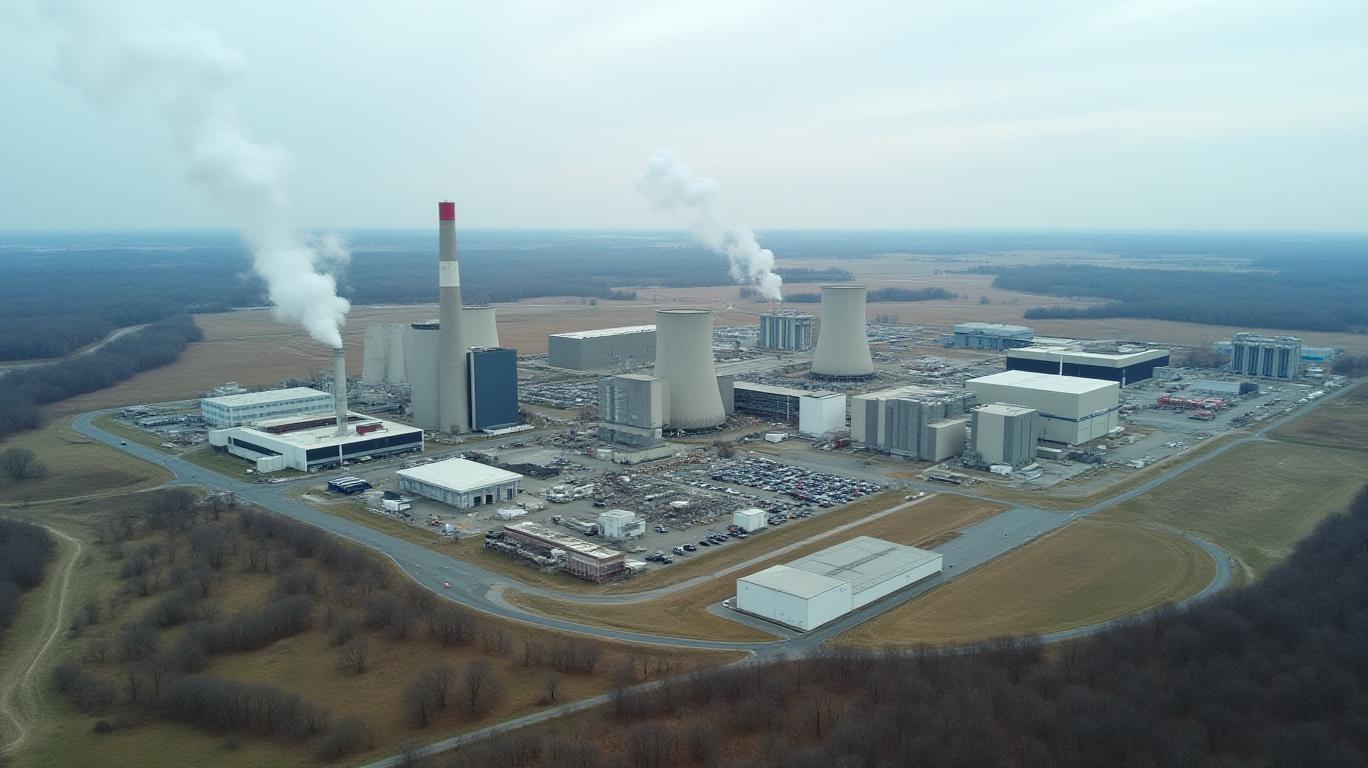Why Constellation Energy Soared 11%: Analysts and AI Power the Surge
On May 6, 2025, Constellation Energy Corporation (NASDAQ: CEG) surged 11.27%, marking one of its most significant single-day gains in years. The rally was fueled by a mix of analyst upgrades, robust financial performance, and strategic moves into high-growth sectors like AI-driven energy infrastructure. This article dissects the catalysts behind the surge and evaluates the stock’s future trajectory.

Analyst Optimism Sparks the Rally
The stock’s jump began with Citigroup’s upgrade from Neutral to Buy, accompanied by a $232 price target. This move alone triggered a 12% intra-day spike, as investors reacted to the firm’s bullish thesis on co-location deals and AI power market opportunities. Other analysts followed suit: Guggenheim trimmed its price target to $372 but maintained a Buy rating, while UBS lowered its target to $283 but kept its bullish stance. These upgrades highlighted growing confidence in Constellation’s ability to capitalize on structural shifts in energy demand.
Q1 Earnings: Revenue Surges, but Earnings Miss
The company reported Q1 2025 revenue of $6.8 billion, a staggering 26% year-over-year increase and far above the $5.4 billion consensus. This outperformance was driven by strong nuclear operations, gas fleet efficiency, and renewable energy sales. Management emphasized adjusted operating earnings of $2.14 per share, up 17.6% from 2024, which fueled optimism.
However, GAAP earnings fell to $0.38 per share, missing estimates due to non-operational items like unrealized losses on derivatives. While this raised eyebrows, investors focused on the reaffirmed 2025 guidance of $8.90–$9.60 per share in adjusted earnings, signaling confidence in long-term fundamentals.
Strategic Moves: Acquisitions and AI Alignment
The acquisition of Calpine Corporation, set to close by Q4 2025, remains a transformative catalyst. The deal will create the largest U.S. emissions-free energy producer, expanding Constellation’s customer base to 2.5 million households and businesses. Analysts project the merger to be accretive by over 20% to adjusted earnings by 2026, with cumulative value of $2.00+ per share through 2029.
Equally critical is Constellation’s pivot to AI and data center infrastructure. With the U.S. government prioritizing AI as a “national security imperative,” the company is positioning itself to power hyperscalers and government projects. Projections for 140 GW of data center demand by 2030 (per MISO) align with Constellation’s $2.5 billion annual investment in nuclear uprates and land acquisitions, ensuring it can meet this rising demand.
Financial Health: Strengths and Weaknesses
- Balance Sheet: The company holds $3 billion in cash, a 1.6 current ratio, and a 0.64 debt-to-equity ratio, indicating manageable leverage. Moody’s upgraded its rating to Baa1, reflecting improved creditworthiness.
- Dividends: A 25% dividend hike in 2024 (to $0.3878 per share) and plans for a further 10% increase in 2025 underscore financial stability.
- Risks: Despite these positives, negative free cash flow of -$1.7 billion and $39.38 billion in total liabilities raise concerns. The 26x trailing P/E ratio and 3.3 price-to-sales multiple also suggest overvaluation relative to near-term growth prospects.
Bear Case: Valuation and Execution Risks
Critics argue the stock is overvalued, with a 5.9 price-to-book ratio and projected sub-7% annual EPS growth over five years. The Motley Fool’s exclusion of CEG from its top picks highlights skepticism about its growth trajectory. Additionally, regulatory delays in the Calpine acquisition and missed quarterly earnings guidance could test investor patience.
Conclusion: A Momentum Play with Long-Term Potential
The May 6 surge was a confluence of short-term catalysts—analyst upgrades, revenue overperformance—and long-term bets on AI and clean energy. Constellation’s $23.57 billion annual revenue and 31.12% ROE confirm operational excellence, while its Calpine deal and PTC-backed nuclear fleet provide a low-risk, high-reward foundation.
However, investors must weigh these positives against valuation risks and execution hurdles. Bulls may find comfort in the 13%+ annual earnings growth through 2030 projected by management, while bears will monitor free cash flow recovery and regulatory approvals.
In the near term, traders should heed Timothy Sykes’ advice: “Be patient, don’t force trades.” The stock’s $273 peak on May 6 may test resistance levels, but its $232 Citigroup target offers a solid entry point. For long-term investors, the $372 Guggenheim price target suggests 36% upside—provided Constellation executes on its AI/data center strategy and improves cash flow.
In conclusion, Constellation Energy’s surge was justified by its strategic vision and financial resilience, but sustained gains will depend on navigating valuation skepticism and operational risks. As the energy sector evolves, this stock remains a bellwether for the fusion of old-world infrastructure and new-world AI demands.



_23f7f7eb1749627884277.png)





